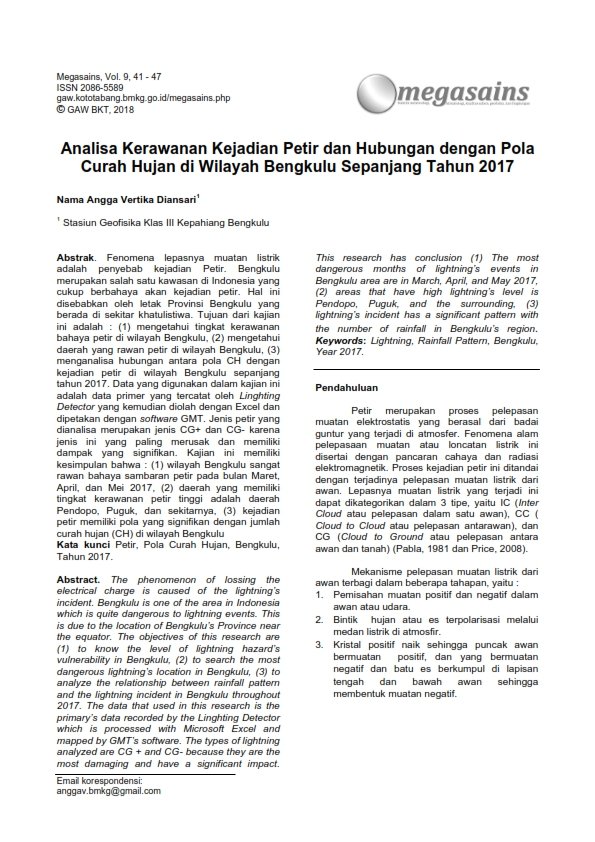Analysis of the Frequency of Lightning Events and Relationship with Patterns Rainfall in the Bengkulu Region Throughout 2017
Main Article Content
Abstract
The phenomenon of lossing the electrical charge is caused of the lightning’s incident. Bengkulu is one of the area in Indonesia which is quite dangerous to lightning events. This is due to the location of Bengkulu’s Province near the equator. The objectives of this research are (1) to know the level of lightning hazard’s vulnerability in Bengkulu, (2) to search the most dangerous lightning’s location in Bengkulu, (3) to analyze the relationship between rainfall pattern and the lightning incident in Bengkulu throughout 2017. The data that used in this research is the primary’s data recorded by the Linghting Detector which is processed with Microsoft Excel and mapped by GMT’s softwar The types of lightning analyzed are CG + and CG- because they are the most damaging and have a significant impact. This research has conclusion (1) The most dangerous months of lightning’s events in Bengkulu area are in March, April, and May 2017, (2) areas that have high lightning’s level is Pendopo, Puguk, and the surrounding, (3) lightning’s incident has a significant pattern with the number of rainfall in Bengkulu’s region
Article Details

This work is licensed under a Creative Commons Attribution-NonCommercial 4.0 International License.
The author is willing to retain the copyright and grant journal rights to the first publication with works that are simultaneously under license the Creative Commons Attribution-NonCommercial-NoDerivatives 4.0 International. It allowing the others to share the work with recognition of the author's work and the initial publication in this journal.
Authors can enter into separate additional contractual arrangements for the non-exclusive distribution of published versions of journal works (for example, posting them to institutional repositories or publishing them in a book), with recognition of the initial publications in this journal.
Authors are permitted and encouraged to send their work online (for example, in their institutional repositories or websites) before and during the submission process because it can lead to productive exchanges, as well as previous and larger citations of published works.

